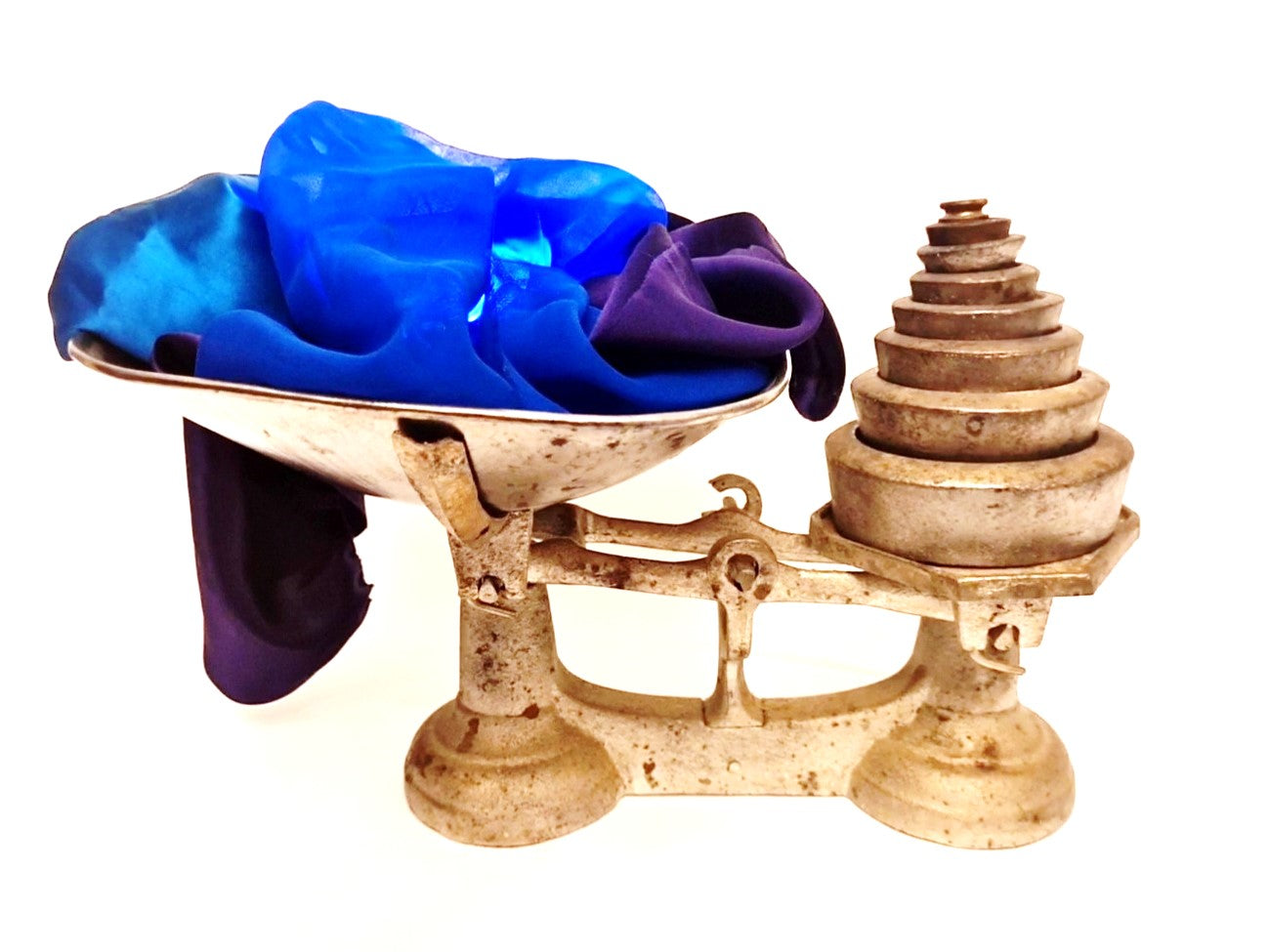Silk Weights and Measures

There are number of aspects to silk production; The way the fibre is prepared, the weave or knit and whether the thread is dyed before or after weaving. Another more basic property of silk fabric is the weight or, how much actual silk thread is needed to produce any given type of fabric.
As with most weights and measures, there is more than one way to go about it and has everything to do with the geography of silk production. The two main historical centres of silk trade, China and India, differ in many things like breed of silk worm, weaving techniques, their end uses, and of course how to calculate the weight of silk fabrics. China uses a measurement known as Mommes (mm), confusingly annotated the same as millimetres (mm) and attributed to the Japanese in origin, while modern India uses the same weighing technique as paper manufacturers; grams per square meter, noted as g/m2 or “GSM” which you might have seen printed on reams of printer paper.

Which do you use? Manufacturers from both countries continue to use the one they’re comfortable with and you can calculate from one to the other (more on the maths later). GSM makes far more sense in the modern world than mommes as a way forward, however mommes has always been traditionally used on silk fabric and silk alone with no reference to any other type of fabric and especially not paper. So, as with most things, knowing about both and how to switch between them helps.
Mommes is purely a way to weight silk and tell at a glance the density of any given weave BUT recently has been used to imply the quality of the fabric in some way; whether at the low number end to denote how fine and light the fabric because it doesn’t weigh much, such as silk meshes and tulles, or at the high number end to hint at how many silk fibres have actually been used in the weaving of the heavier and often more luxurious fabrics exemplified by Duchess satins and heavy crepe satins. Remember, mommes is only a weight calculation and says nothing of the quality of fibres used or the carefulness of the weave.

What exactly is the measurement? 1 momme is equal to 100 yards of 45 inch-wide fabric equalling 1 pound in weight. This is not an actual fabric as it would be extremely diaphanous and sheer if it were real, the lightest silk fabric we stock is silk tulle at about 5 mommes. Contrast this to the grams per square meter model that can be calculated with only 1 meter rather than a whole 100 yards (94.14 meters). The conversion rate from mommes to gsm is 4.340g to 1 momme. The really interesting part about the momme measurement is that most silk fabrics we get now days is not 45 inches (114cm) wide anymore. Almost all of our natural fibre is woven to 137cm (54 inches), so if you wanted to buy 100 yards of fabric, go home and measure how many pounds that weighed to understand the momme of the fabric, it wouldn’t be accurate! Taking a meter of fabric, cutting it to a meter wide and popping it on some kitchen scales is definitely an achievable measurement at home.

Where do most of our fabrics fall about the scale? And when does measurement even come in to play? Most of our plain silks have a momme count, with our sheer fabrics weighing in at 5-6mm and some of our heaviest satins coming in at 40mm. There are some fabrics that are made the same way but with more fibres added to one and not the other; for example, we have two different weights of Crepe de Chine, one at 16mm and one at 23mm and a heavier 25mm Satin than our usual Sandwash satin that comes in at 19mm. We also have gsm measurements for a lot of our non-silk fabrics, for instance the soft tulle weighs only 15gsm, while something quite heavy and bulky like the Stretch Polyester Crepe is a hefty 425gsm, so that means a square meter nearly weighs an average tub of butter.

-
Posted in
Fabric Weight, silk, silk facts, Silk weight
